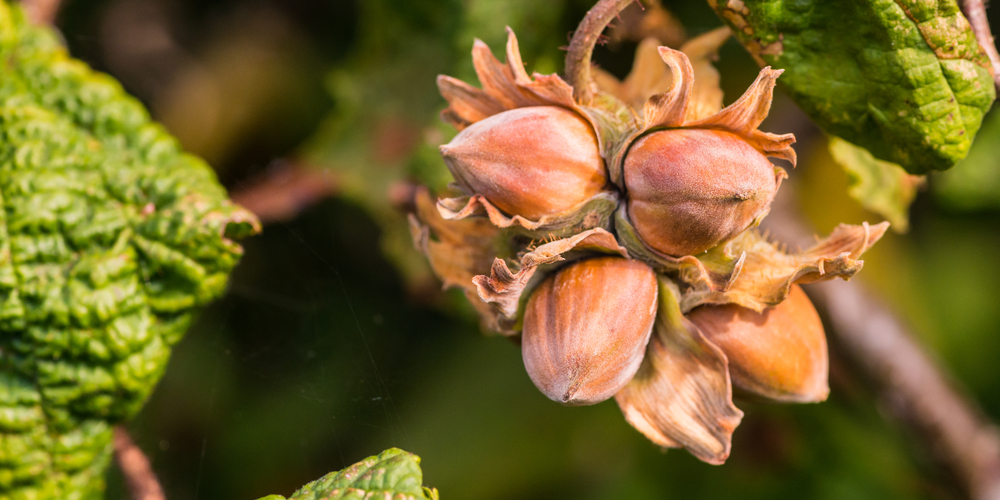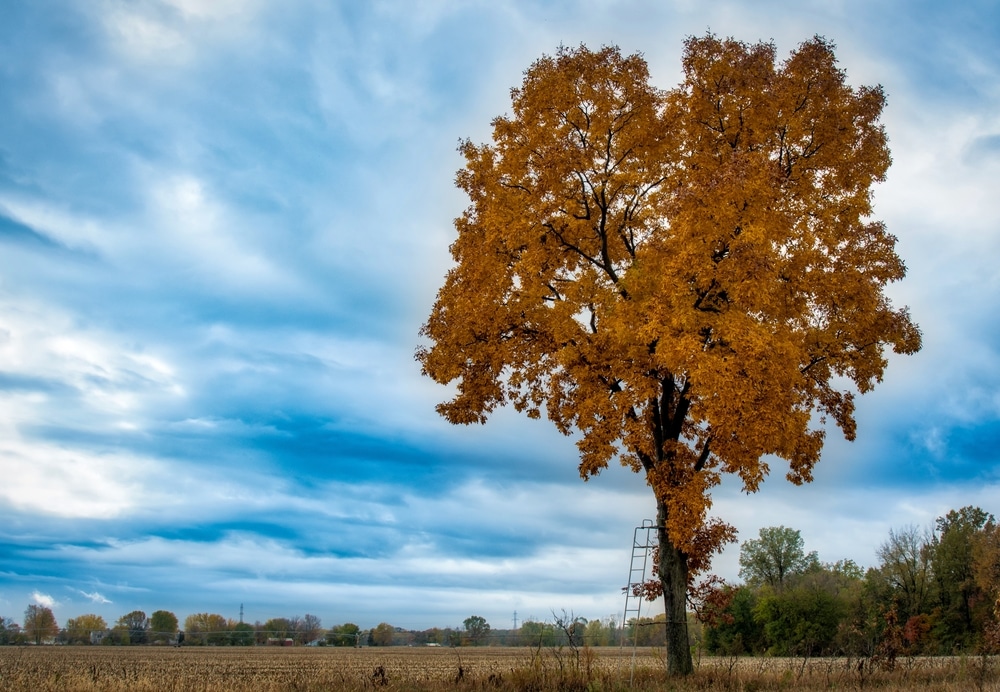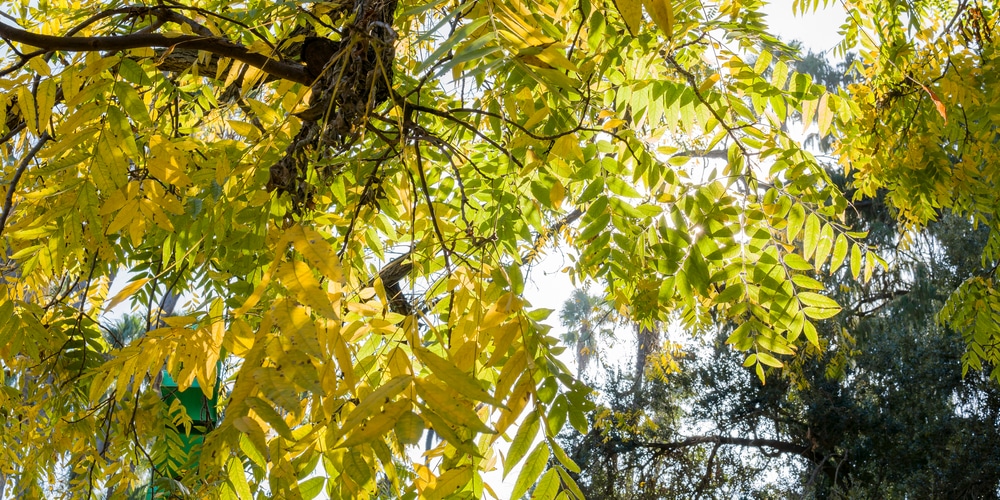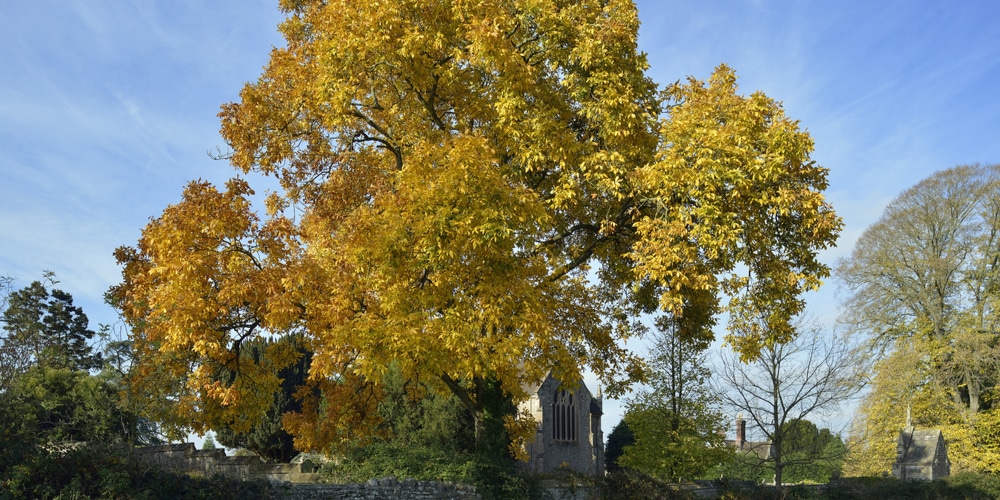There are plenty of native nut trees in Virginia, and many of the nuts are edible. Some of these nut trees grow wildly, while others are from other states or countries. Let’s take a look at the nut trees that are native to Virginia.
American Chestnut (Castanea Dentata)
The American chestnut tree is native to Virginia, but this tree is nearly extinct. They typically grow in hardiness zones five through eight. This tree grew around the Appalachian Mountains, but after exposure to chestnut blight (a deadly fungus for trees), many of the chestnut trees died. You can still find them scattered in Virginia, but they’re rare.
The American Chestnut tree typically reaches heights of 100 feet and can reach diameters of up to 20 feet. Flowers grow on the trees in the summer months, and the nuts mature in the fall.
American Hazelnut (Corylus Americana)
The American hazelnut tree grows in hardiness zones four through nine. You’ll find this small nut tree, or shrub, scattered throughout the state of Virginia. The tree typically grows up to nine to 12 feet tall and eight to 13 feet in width. The trunk has brown bark with a crisscrossing pattern. The tree begins flowering in the late summer, and the edible nuts mature by the fall.
Bitternut Hickory (Carya Cordiformis)
The bitternut hickory grows in hardiness zones four through nine. You can find this nut tree in moist areas around the state of Virginia, such as coastal areas. This tree typically grows up to 50 to 100 feet tall and 25 to 40 feet wide.
The tree produces hard, light gray bark. Yellow and green flowers begin blooming in the spring, and edible sphere-shaped nuts mature by the fall.
Black Walnut Tree (Juglans Nigra)
The black walnut tree grows in hardiness zones four through nine. You can find them in Virginia forests and meadows where the soil is fertile. The tree grows as tall as 50 to 90 feet and 50 to 70 feet wide.
The rough, thick bark of the tree is a very dark brown and has plenty of ridges and crevices. The three to six-inch yellow and green flowers bloom in the spring, and the edible one to three-inch nuts are ready by the fall.
Butternut (Juglans Cinerea)
The butternut tree is a white walnut tree, and its growth area overlaps with the black walnut tree. In Virginia, it grows in wooded, moist forests where there is fertile soil. This species seems to be more scattered around the state compared to the black walnut tree.
The butternut tree grows in hardiness zones three to seven. It can grow up to 40 to 60 feet tall and 40 to 60 feet wide. The tree’s bark is light gray and has many rough ridges, similar to the Black Walnut tree. The yellow flowers bloom in the spring and summer, and the small edible nuts are ready by the fall.
Mockernut Hickory (Carya Tomentosa)
The mockernut hickory grows in hardiness zones four through nine and likes to grow in well-drained areas in Virginia. The tree grows as tall as 60 to 80 feet and 40 to 60 feet wide. The bark is usually dark brown to gray with shallow crevices. By the springtime, the yellow and green flowers bloom, and the edible nuts are ready to eat by the fall.
Pignut Hickory (Carya Glabra)
The pignut hickory grows in hardiness zones four through nine and grows in ridges and hillsides within Virginia. This tree likes mountainous areas. The tree typically grows up to 60 to 80 feet tall and up to 40 feet wide. The tree’s bark is light gray and has smooth ridges. The small yellow flowers bloom in the spring and produce one to three-inch edible nuts in the fall.
Shagbark Hickory (Carya Laciniosa)
The shagbark hickory grows in hardiness zones five through eight and grows along the mountains in Virginia. The tree typically grows as tall as 60 to 80 feet, but it can grow over 100 feet. The tree has a narrow trunk, and most of the foliage sits atop the tree and spans outward 40 to 60 feet wide.
The bark of the tree is gray and has a scaly texture. The tree produces yellow and green flowers in the spring that turn into cream-colored edible nuts by the fall.
Conclusion
Many of the nut trees in Virginia like to grow in forested, well-drained areas. So, you may need to travel into the woods to find them. If you want to try the nuts on these trees, it is best to visit them in the fall when they are mature.




